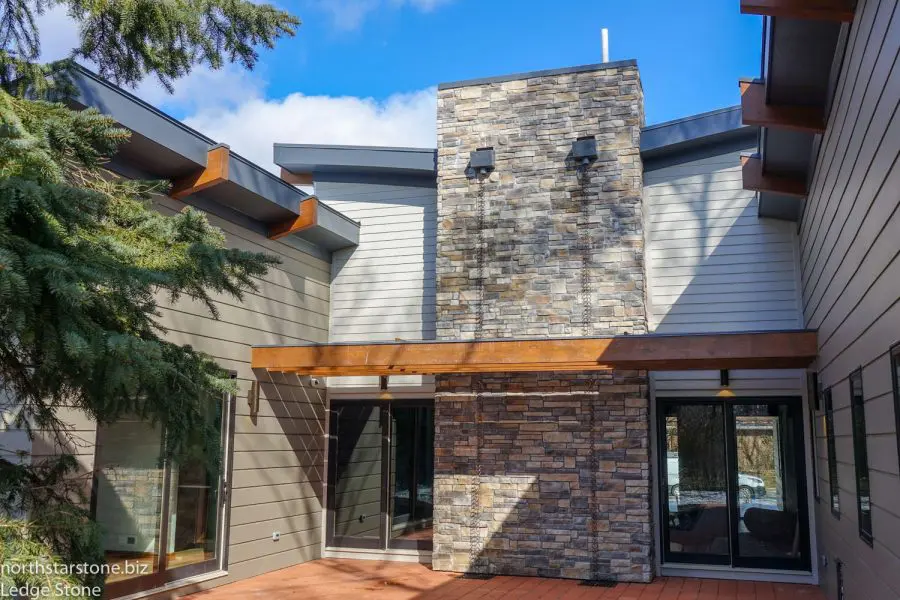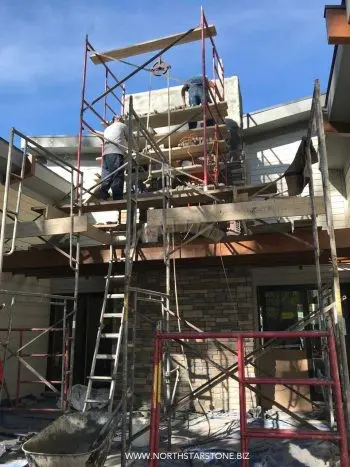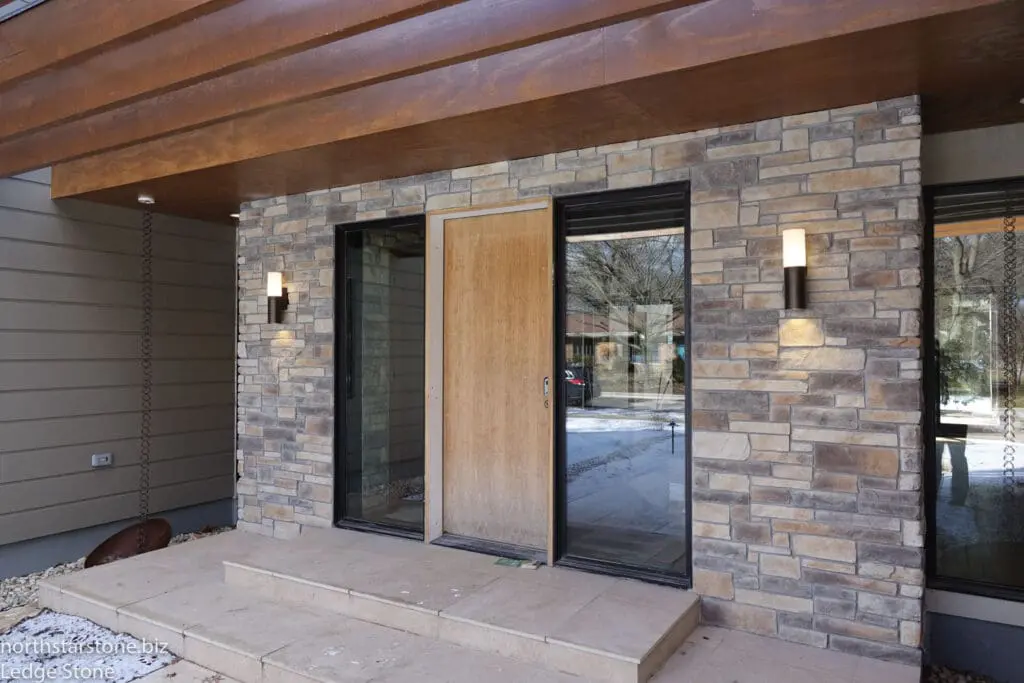
Brick and stone veneer are nothing new to the world of architecture and construction. They are attractive, durable, and don’t come with the same hefty price tag as a traditional, full sized stone or brick.
And, in the instance of this beautiful new home in Evanston, Illinois, their use marks achieving a standard of sustainability measured by the popular certification program, LEED. These are no ordinary stone veneers. They are entirely man-made, which gives them several important qualities that do well to promote environmentally friendly design.
This article aims to examine this stunning work of residential construction, and answer a few fundamental questions about LEED. What is it? Why is it Important? And how do things like sourcing local, sustainable materials make an impact on the environment?
Leadership in Energy and Environmental Design (LEED)
LEED isn’t the only sustainability certification program in the design and construction industry, but it’s become the most ubiquitous. It began development in 1993 by the National Resources Defense Council (NRDC) as an avenue for setting green building standards for architects, engineers, builders, material suppliers, and developers.
Few things affect the health of our planet more than the things we build. From design and construction to maintenance and upkeep, the embedded energy in the constructed world contributes to a host of environmental issues that architects, engineers, and legislators are responsible for addressing in an attempt to slow our impact on the planet and preserve it for generations to come.

LEED was designed to do just that.
The program is in a constant state of development – always adjusting to our ever-changing understanding of environmental impact and protection. While the intricacies and details of the criteria are complex, projects can earn credits for such things as using low-VOC paints and materials, insulating past code requirements, specifying energy efficient HVAC systems and appliances, and other design related issues such as solar orientation and water conservation.
Depending on how many credits a project earns in accordance with the building type, it will be awarded a silver, gold, or platinum designation.
However, for everything LEED does to set a project up for environmental success, it’s still up to the design and construction team to focus those efforts into something that is beautiful, comfortable, and functional.
The LEED Home Made With Stone Veneer
That brings us to Evanston, Illinois first ever LEED Platinum certified home. The home, which is currently undergoing construction and knee-deep in the certification process, is as architecturally interesting as it is sustainable. It is organized as an ‘H’ shape in plan and wraps around several exterior courtyards. The design focuses on energy efficiency, water conservation, and utilizing materials that reinforce its commitment to sustainability.
One of those primary materials is an exterior stone veneer product that has several embedded qualities that help the project earn valuable LEED credits.
The stone veneer used in this project, our stone veneer, is entirely man-made. Ironically, it’s this very fact that made it such an appropriate and sustainable stone siding material for this home. It’s manufactured using significantly less water than natural stone, which requires a massive amount for the cutting and shaping process. Furthermore, the manufacturing facility is located in the nearby northern Indiana, earning LEED credits for proximity to the job site.
Our stone veneer helps the project achieve its status as a leader in sustainability, yes, but it also gives the home a unique, natural look in places its applied. The stone veneer product can be applied to the exterior, where it will last as long as the structure does, or the interior as fireplace stone or perhaps an attractive accent wall.
The versatility of the stone veneer allows architects and builders to be creative with a product that is also inherently sustainable. And better yet, it comes with an affordable price tag that will ensure it doesn’t get value engineered out of the project.

The Future of Building Materials
The construction materials industry is currently undergoing a massive shift in the way products are manufactured, delivered, and even installed. People today are aware of how important protecting the environment has become, and value sustainability in home building more than ever.
And when clients and home-buyers universally begin to value something, the industry responds. Sustainably manufactured exterior stone veneers are just the beginning of a story that includes a wide variety of eco-friendly, ‘green’ products. They are not only getting more and more affordable, they are easy to source no matter where you happen to be building your new home.
And more than that, a responsibility has been bestowed upon architects and engineers to take sustainability into their own hands, in part by developing relationships with vendors and product manufacturers to get the most out of the material specifications for their jobs. And whether you’re cladding an entire building in exterior stone or simply renovating a stone fireplace, there are small choices to be made that can have a massive impact on the built world.
This home in Evanston, Illinois provides a beacon that future residential projects can look to for eco-friendly inspiration. It masterfully blends architectural innovation with environmental engineering, wrapped in a package that expresses its most choice material specifications. It gives meaning to its place, and provides the home owners with a comfortable place to live that pays the ultimate respect to the environment. North Star Stone was proud to be a part of this LEED project, and looks forward to many more down the road. If you’re in the process of building a LEED certified home, stone veneer is a perfect choice for your home’s stone fireplace, siding and so many other parts of the home. Get a free, fast estimate for your stone veneer here.

